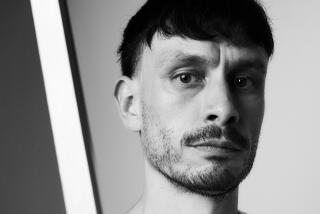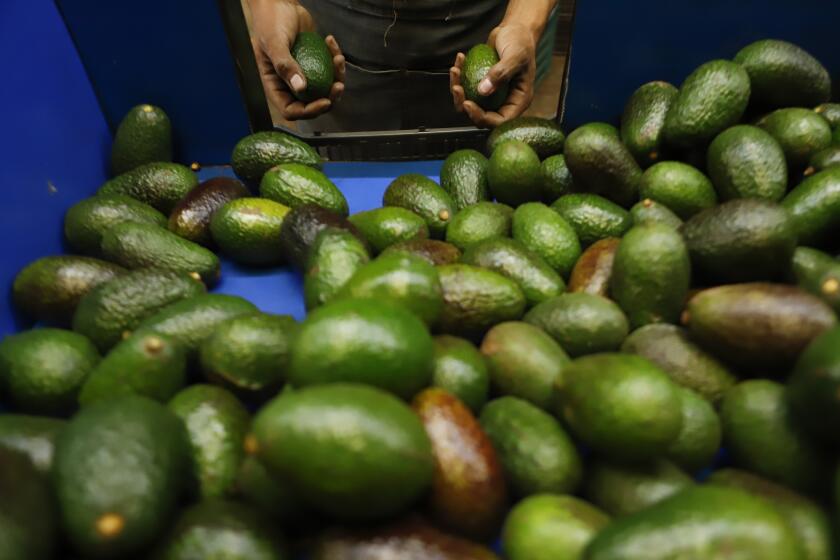Maurice Sendak and the wildest things of all
Maurice Sendakâs death was announced Tuesday just a few minutes before I was due at the residential foster home and school where I volunteer, teaching writing to abused teenagers.
Sendak, the author and illustrator of âIn the Night Kitchen,â âWhere the Wild Things Areâand other childrenâs classics, once told NPRâs Terry Gross that as a kid he thought that âadults seemed mostly dreadful.â I suspect the kids who find themselves in our foster care system would agree.
I got to the school library before the class arrived, so the librarian and I had a moment to grieve about Sendak. She told me that she and her husband had just been talking about his 1967 book, âHigglety Pigglety Pop! or There Must Be More To Life.â She said it was that book that helped them throw over their old life and move to California years ago.
Our conversation was interrupted by a scream in the corridor. An amazing, prolonged, nightmarish scream, produced by a child beyond the brink. Iâve read about screams sounding inhuman, but this was the first Iâd ever heard.
There was no explanation.
When I first toured the school I was shown a few small, soundproofed rooms, each with a narrow bench-bed inside. Details were few, but I was told that the children could be volatile and self-destructive and sometimes needed isolation. When the unearthly scream subsided, I imagined the screamer being ushered into one of those freak-out chambers to roar his terrible roars and gnash his terrible teeth.
Transitions from one class to another are delayed when there are disruptions in the hall, so my kids were late trooping in. There were two new faces. Other faces were missing, including some Iâd become quite fond of.
Iâd been discouraged from asking questions about my studentsâ lives, and so I know very little about what situations land them here or take them away.
I am endlessly curious, of course, about the big, burly, painfully blushing shy boy who likes art books; the too-cool-to-smile but clearly sweet boy always eager to read his writing out loud first; the chatty ones; the pierced and tatted; the ones nodding on meds; the giggly; the sullen; the pregnant. But when the librarian says, âTrust me, you donât want to know their stories; itâs best to just think of them as kids,â I try to do just that.
On Tuesday, I asked the class if they knew who Maurice Sendak was, and none did. I asked if any of them knew the book âWhere the Wild Things Are,â and a few said theyâd seen the movie.
In 1993, Sendak told NPR, âChildren surviving childhood is my obsessive theme and my lifeâs concern.â In a 1986 interview with Gross, he said, âBeing a child was being a creature without power, without pocket money, without escape routes of any kind.â
Looking around at the captive young people in this class, his statements seemed truer and far more relevant than in most classes I visit. Sendakâs own childhood, like the ones he portrayed in his books, was fraught with peril, isolation and fear. Itâs appalling but not surprising that many adults have found his vision of childhood alarming and want to keep it from their innocent babes. Sendakâs âIn the Night Kitchenâ is 25th on the American Library Assn.âs list of most frequently banned or challenged books.
When I told my class of wild things that I was going to read âWhere the Wild Things Areâ to them, there was a little affronted snickering at the idea of picture books for such big galoots.
I thought about telling them that Sendak had based the wild things on his own Jewish Eastern European immigrant relatives. As he said in a 2004 interview with Bill Moyers, âThese people didnât speak English. And they were unkempt. Their teeth were horrifying. Hair ... unraveling out of their noses. And theyâd pick you up and hug you and kiss you, âAggghh! Oh I could eat you up!ââ
But I didnât give any introduction, figuring Sendak would want these kids to see the wild things as whatever demons of their own needed taming. I started reading and the whole class was instantly silent and still, like a room of children at story time, which is exactly what they were. Listening to Sendakâs words, watching his pictures expand to fill the pages, and shrink back down again.
In âWhere the Wild Things Are,â Max, in his wolf suit, gets sent to bed without supper. But after his great adventure out-wilding the wild things, he returns to his room and finds his dinner waiting for him, still hot.
Unlike Max, my students canât count on dinner to be waiting for them, but they clearly understood Max, and heard Sendak as clearly as if he were still alive, and would be forever.
Amy Goldman Kossâ latest novel for teens is âThe Not-So-Great Depression.â
More to Read
A cure for the common opinion
Get thought-provoking perspectives with our weekly newsletter.
You may occasionally receive promotional content from the Los Angeles Times.










